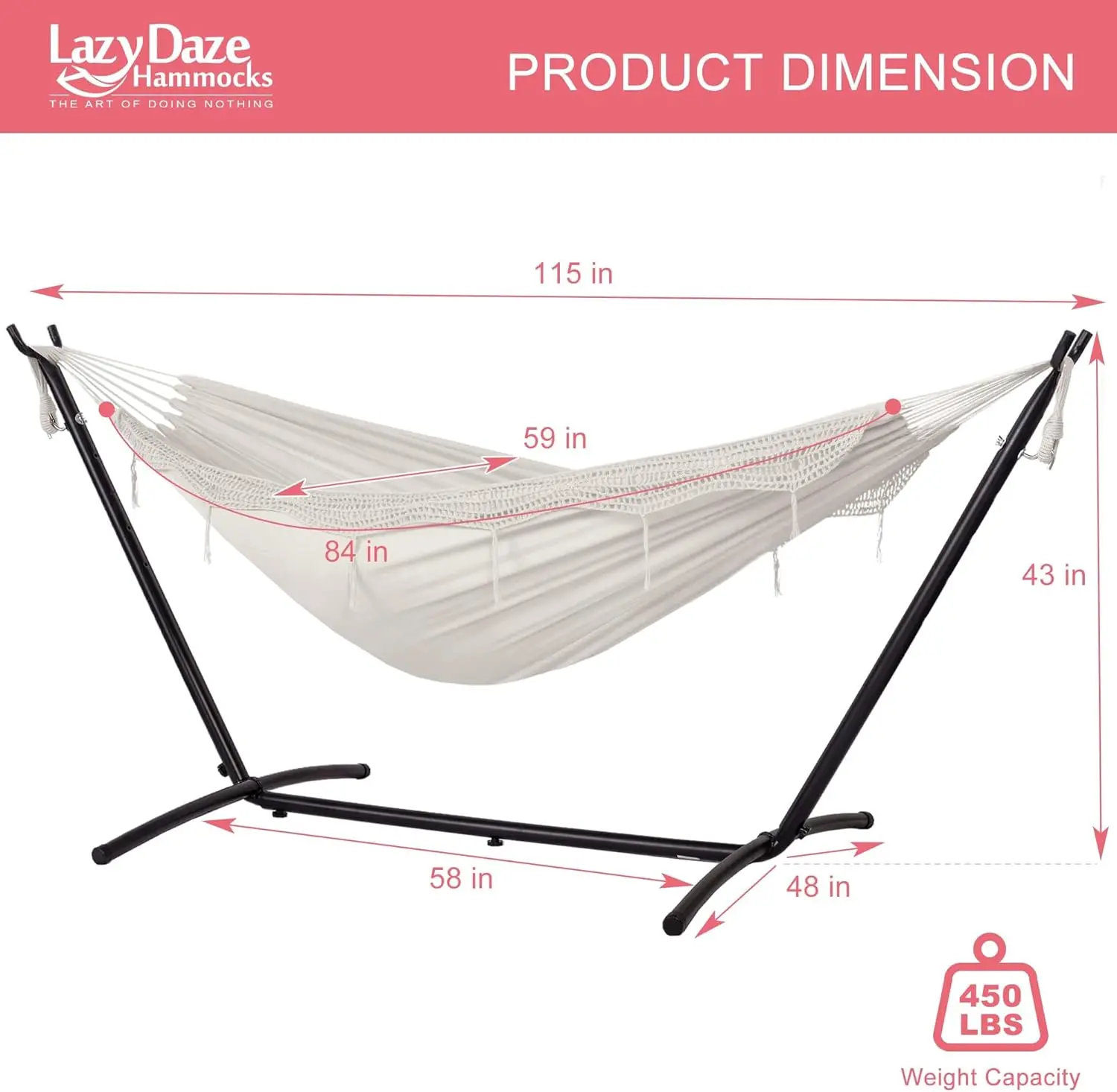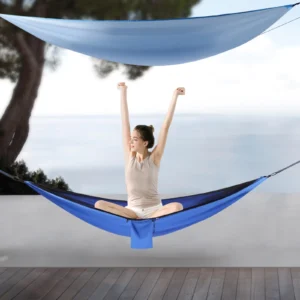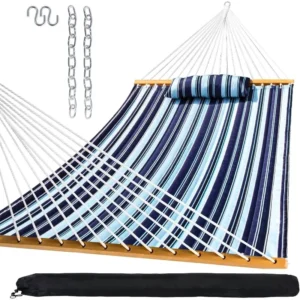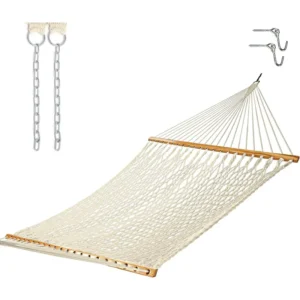When it comes to relaxing outdoors, few things match the blissful comfort of a hammock. However, not all hammocks deliver the same experience. The choice between deep hammocks and standard hammocks can significantly impact your relaxation quality. This comparison explores the key differences in comfort between these two popular hammock styles.
The quest for hammock comfort is highly personal. What feels heavenly to one person might feel restrictive or unstable to another. While some prefer the enveloping embrace of a deep-seat hammocks lounging experience, others might enjoy the flatter, more open feel of traditional designs.
Understanding these differences isn’t just about terminology—it’s about finding your perfect match for optimal relaxation, whether you’re planning a quick afternoon nap or an overnight camping adventure.
Understanding the Terminology: What is a “Deep” Hammock vs. a “Standard” Hammock?
Before diving into comfort comparisons, let’s clarify what defines these hammock categories:
Deep Hammocks
Deep hammocks, sometimes called gathered-end hammocks, feature fabric that bunches together at the ends to create a cocoon-like experience. When you lie in them, the sides naturally wrap around you, creating a deeper, more enveloping sensation. The ultimate guide deep seat hammock experience typically includes:
- Brazilian hammocks: Cotton hammocks with tightly woven fabric
- Mayan hammocks: Featuring string-like weaves with more flexibility
- Camping hammocks: Lightweight nylon designs that pack down small
These hammocks create a curved sleeping surface that many find exceptionally comfortable once properly positioned.
Standard Hammocks
Standard hammocks typically come in two main designs:
Spreader bar hammocks: Feature wooden or metal bars that stretch the fabric flat, creating a more bed-like surface without the deep wrap-around feel.
Bridge hammocks: Use a tension system that creates a flatter surface while maintaining some side support.
Both types offer a more open experience compared to deep hammocks. The fabric stays relatively flat rather than enveloping you. Many people browsing deep seat chair hammock sets are surprised by the comfort differences between these distinct styles.
The Science of Hammock Comfort: How Design Affects Your Body
The comfort of a hammock isn’t just subjective—it’s based on biomechanical principles that affect how your body is supported.
In deep hammocks, your body naturally forms a gentle curve that many ergonomists consider ideal for spinal alignment. When lying diagonally (at an angle across the hammock), your spine can remain relatively straight while your body conforms to the hammock’s natural curve. This distributes pressure evenly, potentially reducing pressure points.
Standard spreader bar hammocks create a flatter surface that resembles a traditional bed. While this feels more familiar to many first-time users, the tension in the fabric can sometimes create pressure points, particularly under the heaviest parts of your body.
Bridge hammocks attempt to combine benefits from both designs, creating a flatter lying surface while maintaining some side support. Understanding the most comfortable hammock type often comes down to how these design elements align with your body’s specific needs.
Head-to-Head Comfort Comparison: Deep vs. Standard Hammocks
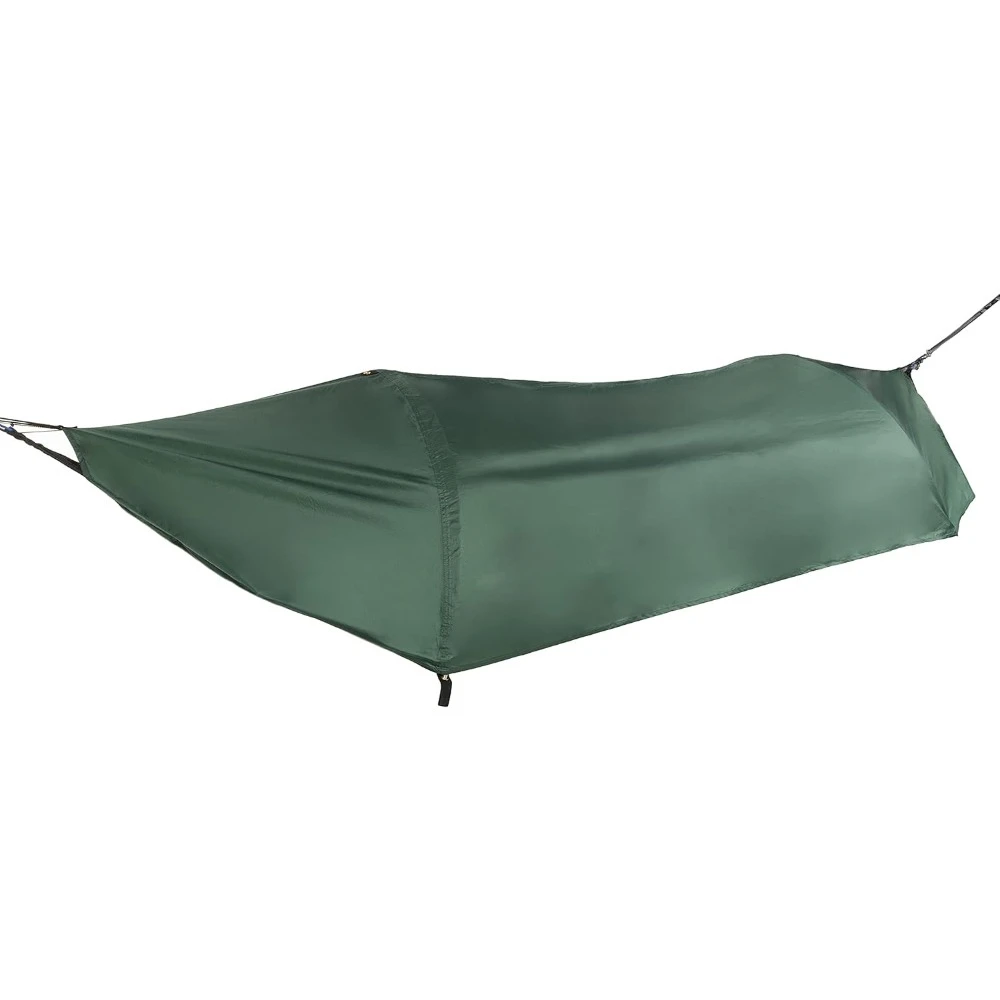
Let’s compare these hammock types across key comfort factors:
Body Support and Pressure Distribution
Deep Hammocks: Distribute weight more evenly across a larger surface area, creating a “zero-pressure” feeling when properly hung. The fabric conforms to your body, supporting natural curves.
Standard Hammocks: Offer firmer support with less contouring. The taut fabric may create more concentrated pressure points, particularly under the shoulders and hips.
Sleeping Positions
Deep Hammocks: Excel for diagonal sleepers who position themselves at a 30-45° angle across the hammock. This creates a surprisingly flat sleeping surface within the curved hammock.
Standard Hammocks: Better accommodate back and stomach sleepers who prefer a flatter surface. Hammocks spreader bars standing frames provide stability that some sleepers find essential.
Cocoon Factor vs. Openness
Deep Hammocks: Create a sense of security with fabric that partially wraps around you. This cocoon-like feeling can be comforting but might feel claustrophobic to some.
Standard Hammocks: Offer an open, exposed feeling with clear visibility of surroundings. No fabric walls rise up beside you.
Stability and Entry/Exit
Deep Hammocks: More stable once you’re in position, but can require a learning curve for entry and exit.
Standard Hammocks: Easier to get into initially but have a higher tipping risk during position changes.
Temperature Regulation
Deep Hammocks: Provide better insulation in cool weather as the fabric wraps around you, but can trap heat in summer.
Standard Hammocks: Allow more airflow around your body, keeping you cooler in warm weather but offering less protection from breezes.
Sleeping Positions: Finding Your Perfect Hammock Match
Your preferred sleeping position should heavily influence your hammock choice:
Back Sleepers
Back sleepers typically find both hammock types comfortable, with a slight edge going to standard hammocks for those who prefer minimal curve to their sleeping surface.
Side Sleepers
Side sleeping is generally more comfortable in deep hammocks when using the diagonal lay technique. This allows your shoulders and hips to sink appropriately while maintaining proper alignment. Many camping hammocks stands are designed with this positioning in mind.
Stomach Sleepers
Stomach sleeping presents challenges in both hammock types but is generally easier in standard spreader-bar hammocks that maintain a flatter surface.
Combination Sleepers
If you tend to change positions throughout the night, consider how each hammock type accommodates movement. Deep hammocks require more intentional repositioning but stay stable during movement. Standard hammocks allow easier position changes but may feel less secure during transitions.
The Stability Factor: Tipping Risk and Security
One of the most significant practical differences between these hammock types is stability:
Deep hammocks have a naturally low center of gravity, making them extremely difficult to tip over once you’re properly positioned inside. The sides act as natural barriers that keep you centered.
Standard hammocks with spreader bars have a higher center of gravity and can flip more easily if weight shifts too far to one side. This “tippy” characteristic requires more careful movement, especially for beginners.
For maximum stability, heavy duty hammock sets combine robust design elements with appropriate weight capacities to enhance security regardless of hammock type.
Temperature and Seasons: Weather Comfort Considerations
Your local climate should influence your hammock choice:
Warm Weather Performance
Standard hammocks excel in hot weather, providing maximum airflow around your body. The open design prevents heat buildup and allows cooling breezes to reach you.
Deep hammocks can feel warmer as they partially wrap around your body, potentially trapping heat in summer months.
Cold Weather Comfort
Deep hammocks provide natural wind protection by creating fabric barriers on the sides. They’re also easier to insulate with underquilts that hang beneath the hammock.
Standard hammocks expose more of your body to air, making them challenging to keep warm in cool conditions without additional equipment.
Comfort Pros and Cons: Quick Summary
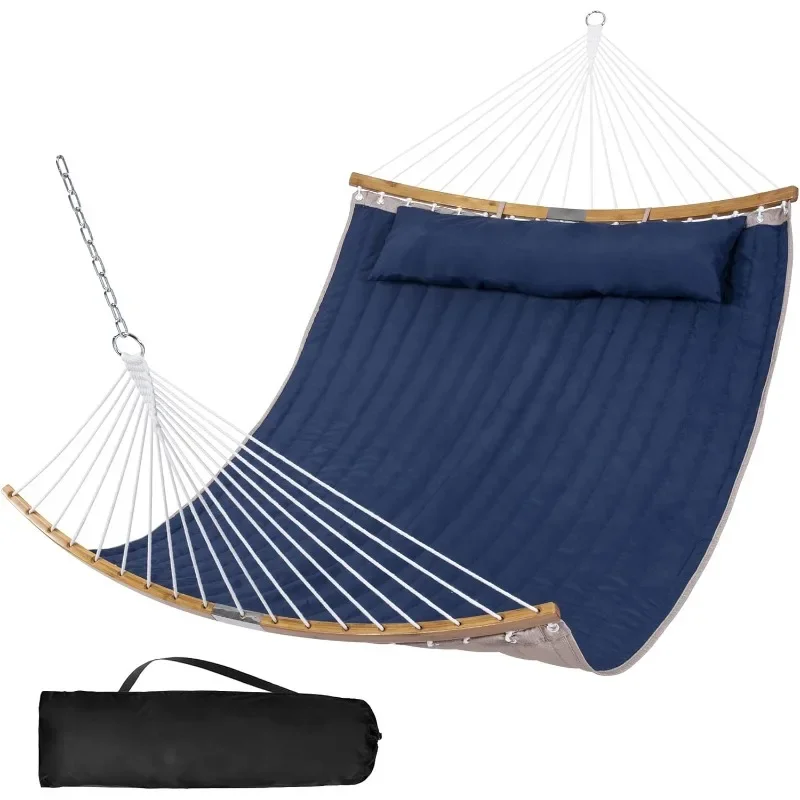
Deep (Gathered-End) Hammocks
Pros:
– Superior pressure distribution
– Excellent for side sleeping (when hung correctly)
– Better spinal alignment for many users
– More stable once positioned
– Natural feeling of security
– Better for cool weather without accessories
Cons:
– Learning curve for proper diagonal positioning
– Can feel confining for some users
– Harder to share with another person
– Can be warmer in hot weather
– Entry and exit require technique
Standard (Spreader Bar) Hammocks
Pros:
– Familiar flat-surface feel
– Easier initial entry
– More open view of surroundings
– Cooler in hot weather
– Visually appealing “classic” look
– Better for stomach sleepers
Cons:
– Higher tipping risk
– More pressure points possible
– Less adaptable to side sleeping
– Requires more care when changing positions
– Limited natural wind protection
The deep seat hammock lounging features provide different benefits compared to standard designs, with neither being universally superior—just different.
Matching Your Lifestyle: Which Hammock Type Suits Your Needs?
Your typical usage scenario should guide your hammock choice:
Backyard Lounging
For casual backyard relaxation with frequent entry and exit, standard hammocks offer convenience and a traditional aesthetic. They’re easy for guests to use without instruction and provide a familiar experience.
Overnight Sleeping
For overnight sleeping, deep hammocks generally provide better ergonomic support and more stable sleep positions once you learn proper setup and positioning techniques.
Reading and Relaxing
For extended reading sessions, deep hammocks provide better back support and fewer pressure points, while standard hammocks offer an unobstructed view of your surroundings.
Limited Space Considerations
Standard hammocks with spreader bar hammock sets tend to require more consistent, dedicated space with fixed anchor points, while deep hammocks can be more adaptable to varying spaces.
Tips for Maximizing Comfort in Any Hammock Type
Regardless of which hammock style you choose, these techniques can enhance your comfort:
For Deep Hammocks:
- Hang with a 30° sag angle from horizontal for optimal support
- Lie diagonally across the hammock center for a flatter position
- Use a small pillow under your knees to reduce lower back pressure
- Consider an integrated ridgeline to maintain consistent sag
For Standard Hammocks:
- Adjust end heights for your preferred incline (head slightly elevated)
- Use a thin pad to minimize pressure points on the taut surface
- Position yourself centrally to minimize tipping risk
- Select the appropriate size for your height (longer is generally better)
Finding the perfect hammock depth lounging comfort often requires experimenting with these adjustments to suit your body type and preferences.
Is a Deep or Standard Hammock More Comfortable for Heavier Individuals?
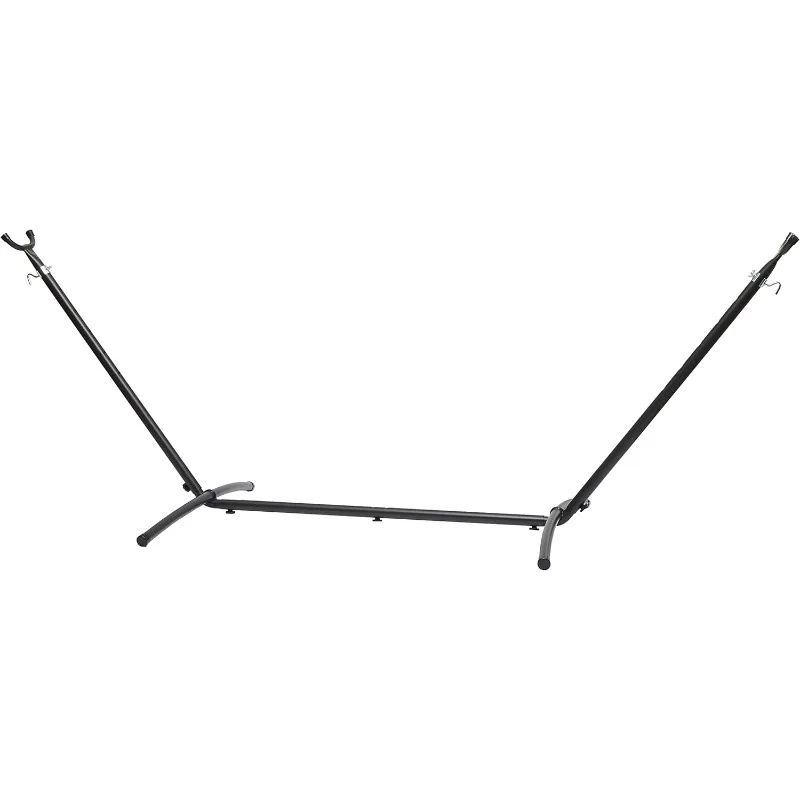
Weight capacity and comfort considerations differ between hammock types for larger individuals:
Deep hammocks typically distribute weight more evenly across a larger surface area, potentially creating fewer pressure points. Their gathered-end design naturally accommodates varying body shapes by conforming to your contours.
Standard hammocks with quality spreader bars offer more structured support but may create more pronounced pressure points due to their taught surface. The flat design provides easier entry and exit, which some larger individuals prefer.
For maximum comfort, look for:
– Reinforced end connections in either style
– Wider fabric width (at least 65” for deep hammocks)
– Higher weight ratings than your actual needs
– Double-layered fabrics for additional support
Comparing quilted vs non-quilted hammocks can provide additional insights into support options for various body types.
How Do Indoor vs. Outdoor Settings Affect Your Hammock Comfort Choice?
A-Frame Stand Hammock Sets, Swinging Hammock Chair Sets
$154.62 Select options This product has multiple variants. The options may be chosen on the product pageCamping Hammock Sets with Bug Net, Ultralight Camping Hammock Sets
$139.72 Select options This product has multiple variants. The options may be chosen on the product pageClassic Wooden Stand Hammock Sets, Heavy Duty Hammock Sets
$1,061.68 Select options This product has multiple variants. The options may be chosen on the product pageHammock Sets with Canopy, Heavy Duty Hammock Sets
$286.31 Select options This product has multiple variants. The options may be chosen on the product pageDouble / Two Person Hammock Sets, Rope Hammock Sets
Double Traditional Cotton Rope Hammock with Extension Chains – 450 lbs Capacity for Backyard & Patio$292.98 Select options This product has multiple variants. The options may be chosen on the product page
Your intended location impacts which hammock style will provide optimal comfort:
For indoor use, deep hammocks can create a cozy reading nook that conforms to your body, though they require secure mounting points. Standard hammocks with hammocks stands provide easier indoor setup with less permanent installation.
Outdoor settings introduce weather variables. Deep hammocks adapt better to uneven anchor points and provide more weather protection options. Standard hammocks create a classic outdoor aesthetic but require more consistent setup parameters.
Consider whether you’ll move your hammock frequently or keep it in a fixed location. Deep hammocks typically pack down smaller for storage or relocation, while standard hammocks with spreader bars maintain a fixed dimension.
Can Accessories Transform Your Hammock’s Comfort Level?
The right accessories can significantly enhance comfort in either hammock style:
For deep hammocks, consider:
– Underquilts that hang beneath the hammock for insulation
– Structural ridgelines that maintain optimal sag
– Specialized asymmetrical tarps for weather protection
For standard hammocks:
– Fitted hammock pads to reduce pressure points
– Weather-appropriate hammock quilts
– Stabilizing accessories to reduce tipping risk
Both styles benefit from proper pillows designed specifically for hammock use, which account for the unique body positioning each type requires.
The best deep hammocks ultimate relaxation experience often combines the right hammock design with complementary accessories tailored to your needs.
Are Traditional Hammock Materials More Comfortable Than Modern Synthetics?
Material choice affects comfort independently from hammock design:
Traditional cotton offers a soft feel against the skin with natural breathability but can retain moisture and take longer to dry.
Modern nylon and polyester materials provide excellent strength-to-weight ratios and quick-drying properties but may feel less soft initially.
Texture sensations vary significantly—traditional string hammocks create a massaging effect many find pleasurable, while solid fabric provides consistent support across the entire surface.
For year-round comfort, synthetic materials generally offer better weather resistance and longevity, while natural fibers like cotton provide superior tactile comfort in controlled environments.
Outside Luxe offers hammocks in various materials to suit different comfort preferences, ensuring you can find the perfect match for your relaxation needs.

